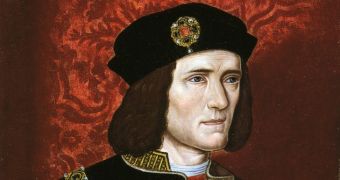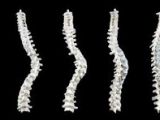A paper published in today's issue of the journal The Lancet details the anatomy of Richard III's spine and shows that, despite being described as a hunchback by Shakespeare, the late king actually suffered from scoliosis.
Based on information presented in this paper, researchers with the University of Leicester in the United Kingdom, together with multimedia specialists, have put together a three-dimensional model of Richard III's spine.
A series of images depicting the shape of Richard III's spine are available below, and they show that, apart from the fact that it was curved to the right, the king's backbone was also somewhat twisted. As specialists put it, it had a spiral shape.
Based on the anatomy of his spine, researchers have concluded that Richard III's right shoulder must have been higher placed than his left one. Besides, his torso must have appeared rather short, at least when compared to his arms and legs.
Interestingly enough, the scientists who have had the chance to study the late king's remains maintain that, had Richard III wanted to hide his deformity from other people, he would have been able to do so without much difficulty.
Thus, based on the shape of his spine, which displayed a so-called well-balanced curve, specialists theorize that the monarch's head and neck were both straight and in as normal a position as it gets. Hence, the king could have hidden his scoliosis under his armor and clothes.
“Although the scoliosis looks dramatic, it probably did not cause a major physical deformity. This is because he had a well-balanced curve,” says Dr. Jo Appleby with the University's School of Archaeology and Ancient History, as cited by EurekAlert.
“Examination of Richard III's remains shows that he had a scoliosis, thus confirming that the Shakespearean description of a ‘bunch-backed toad’ is a complete fabrication,” adds Dr. Phil Stone, chairman of the Richard III Society.
It is believed that, since his legs were normal and symmetric, Richard III would not have had any trouble leading a normal and quite active life. What's more, researchers say that there is no reason why he could not have been the great warrior that historic accounts say he was.
Richard III was a 15th-century monarch. He died in 1485, and his passing marked the end of the so-called the Wars of the Roses (i.e. a series of dynastic wars fought between the houses of Lancaster and York, together with their supporters, for the throne of England).
The late king's remains were found under a parking lot in Leicester, in the East Midlands of England, back in September 2012. However, it was only in 2013 that scientists confirmed that the bones they dug out did in fact belong to Richard III.

 14 DAY TRIAL //
14 DAY TRIAL // 

